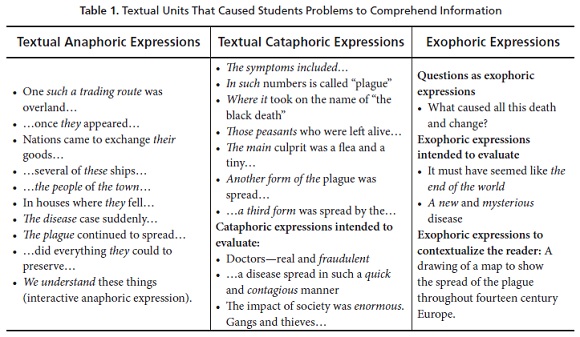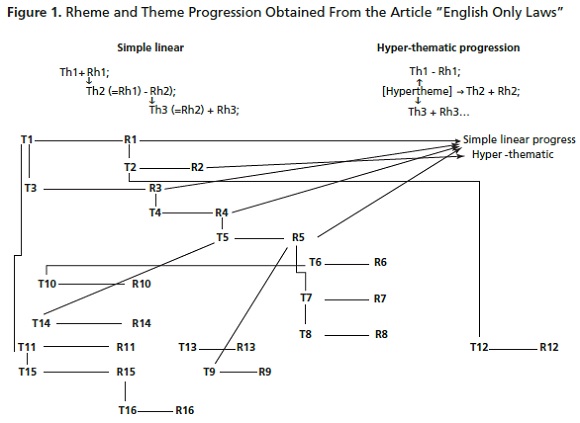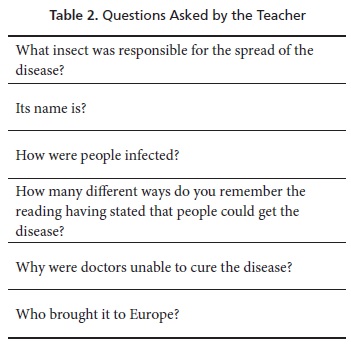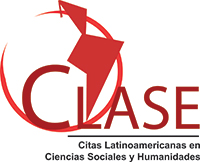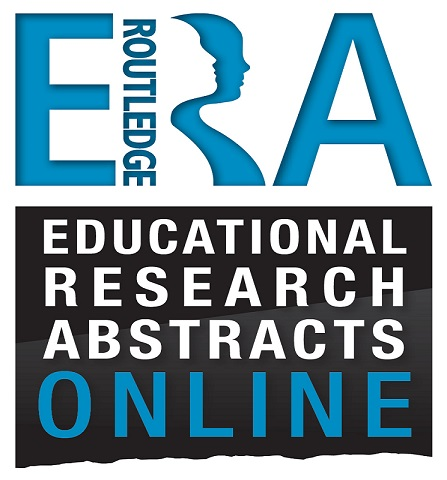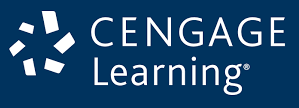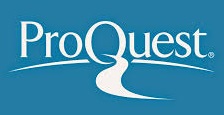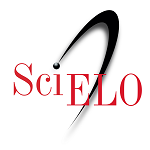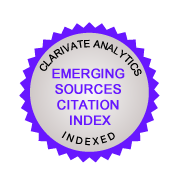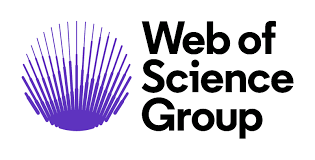Systemic Functional Linguistics and Discourse Analysis as Alternatives When Dealing With Texts
DOI:
https://doi.org/10.15446/profile.v16n2.38113Keywords:
Critical discourse analysis, discourse analysis, reading, systemic functional linguistics. (en)This article presents a case study research with aims to find out which activities, methodological and textual aspects used in a reading strategies course were causing a group of students difficulties when analyzing critically written information. We conducted the study at Universidad de Córdoba (Colombia) with seventh semester students from the undergraduate English program. The data collection techniques used included observations, document analysis, interviews, and a Preliminary English Test for students. The results were analyzed taking into account issues in discourse analysis and systemic functional linguistics. Results show reasons why students find it difficult to successfully complete the analysis of written texts. These results can serve as useful alternatives for planning reading lessons.
Este artículo presenta un estudio de caso que busca analizar qué actividades, aspectos metodológicos y textuales causan dificultades en los estudiantes para analizar de manera crítica información en un curso de estrategias de lectura. Este estudio se realizó en la Universidad de Córdoba (Colombia) con estudiantes de séptimo semestre del programa de inglés. Las técnicas de recolección usadas fueron observaciones, análisis de documentos, entrevistas y un examen de competencia en inglés. Los resultados fueron analizados teniendo en cuenta elementos relevantes del análisis del discurso y de la lingüística sistémica. Los resultados mostraron las posibles razones por las cuales los estudiantes muestran dificultades para analizar textos escritos. Estos resultados pueden servir como alternativas para la planeación de clases de lectura.
PROFILE
Issues in Teachers' Professional Development
Vol. 16, No. 2, October 2014 ISSN 1657-0790 (printed) ISSN 2256-5760 (online)
doi: https://doi.org/10.15446/profile.v16n2.38113
Systemic Functional Linguistics and Discourse Analysis as Alternatives When Dealing With Texts
La lingüística sistémica funcional y el análisis del discurso como alternativas para trabajar con textos
Paula Andrea García Montes*
Ana María Sagre Barboza**
Alba Isabel Lacharme Olascoaga***
Universidad de Córdoba, Montería, Colombia
*paulandreag02@gmail.com
**asagrabe02@gmail.com
***allacharme@hotmail.com
This article was received on May 14, 2013, and accepted on January 24, 2014.
This is an Open Access article distributed under the terms of the Creative Commons license Attribution-NonCommercial-NoDerivatives 4.0 International License. Consultation is possible at http://creativecommons.org/licenses/by-nc-nd/4.0/.
This article presents a case study research with aims to find out which activities, methodological and textual aspects used in a reading strategies course were causing a group of students difficulties when analyzing critically written information. We conducted the study at Universidad de Córdoba (Colombia) with seventh semester students from the undergraduate English program. The data collection techniques used included observations, document analysis, interviews, and a Preliminary English Test for students. The results were analyzed taking into account issues in discourse analysis and systemic functional linguistics. Results show reasons why students find it difficult to successfully complete the analysis of written texts. These results can serve as useful alternatives for planning reading lessons.
Key words: Critical discourse analysis, discourse analysis, reading, systemic functional linguistics.
Este artículo presenta un estudio de caso que busca analizar qué actividades, aspectos metodológicos y textuales causan dificultades en los estudiantes para analizar de manera crítica información en un curso de estrategias de lectura. Este estudio se realizó en la Universidad de Córdoba (Colombia) con estudiantes de séptimo semestre del programa de inglés. Las técnicas de recolección usadas fueron observaciones, análisis de documentos, entrevistas y un examen de competencia en inglés. Los resultados fueron analizados teniendo en cuenta elementos relevantes del análisis del discurso y de la lingüística sistémica. Los resultados mostraron las posibles razones por las cuales los estudiantes muestran dificultades para analizar textos escritos. Estos resultados pueden servir como alternativas para la planeación de clases de lectura.
Palabras clave: análisis del discurso, análisis crítico del discurso, lectura, lingüística sistémica funcional.
Introduction
In the past, teaching English required teachers to concentrate on the development of grammar through drills and translations. By using these techniques students were supposed to learn English. Due to new educational requirements, some students are no longer passive learners; they are more autonomous in learning, active thinkers, and analysts of everyday encounters. Thus, the ministry of education in Colombia has set out very useful standards to help learners construct their own knowledge, develop discourse skills, improve students’ communicative and linguistics abilities, as well as develop their sociolinguistic competences in order to encourage them to be autonomous and critical thinkers. All these aspects challenge teachers to look for effective methods and approaches to improve their teaching and avoid the traditional teaching practices wherein students are not encouraged to debate, reflect, and suggest. Instead they are asked to just internalize sets of words and rules in isolation. These methods can be useful in some cases but when used repetitively in our classes, students will not be given the chance to explore more critical and analytical methods to learn English as active thinkers rather than passive ones.
Nowadays, students should not only acquire aspects regarding vocabulary, grammar, and pronunciation, but they also need to know how to use the language in real situations. Additionally, learners should learn how to identify the purpose of news or magazine article texts. Students need to be given the necessary tools to identify the structure of texts in terms of language, genre, functions, form, linguistic features, words, and intentions in order to lead them to complex analyses of discourses. These in-depth analyses will help students recognize the type of text or articles they are dealing with, that is, whether it is a spoken or written discourse, which words, rules, and language characteristics the text contains in order to accomplish a specific purpose. However, we realized that this opportunity was not widely given to students in most reading classes we observed since teachers and students tended to concentrate more on the development of skimming and scanning strategies and on answering literal questions. Thus, students found reading classes a little bit monotonous since they noticed they were not making progress in their reading lessons. The use of skimming and scanning as mentioned above are very useful for students’ learning process in reading, but there should be transitions or a progression from these skills to more complex or challenging ones such as inferring, implying, concluding, analyzing, and so on, in order to awaken students’ critical analysis of the information given by the teacher.
During the study, we also identified issues regarding material and methodologies used to help students read. Here we observed that students did not have enough opportunities to read critically since they were not or had not been exposed to the analysis of ideas in texts that required careful study of words, phrases, structures, purposes, and so on. Likewise, sometimes materials used in class did not correspond to students’ English level and teachers did not choose the materials based on students’ ages or interests. Additionally, students did not seem to be competent enough to implement reading strategies such as inferring, implying, or applying complex mental processes. Most of the students found it difficult to identify purposes, intentions, text types, structures, or functions.
Another factor that helped us carry out the study had to do with students’ reading difficulties. We noticed that students have many problems reading or dealing with unknown words and structures. When analyzing texts, the majority of the students did not know how to cope with the vocabulary presented in the article.
Based on that situation we decided to implement the use of discourse analysis and, particularly, systemic functional linguistics (SFL), which is a useful tool in identifying which aspects of teachers’ methodology and texts were affecting seventh semester students’ reading processes and understanding. We were interested in characteristics of texts used in class that prevented students from effectively understanding messages conveyed in everyday texts as well as in analyzing teachers’ methodology when applying reading activities.
During the study, we considered discourse analysis not only as a tool to identify anomalies in texts or characteristics of texts that might cause reading difficulties, but also as a very important source to help students become active readers. We also find it meaningful as a way to encourage students to become effective analysts of texts/conversations in order to identify ideologies, purposes, and aims of both written and oral discourses. Teaching students how to approach information in order to analyze messages given in texts is a wonderful process since learners are not reading in order to answer simple questions. On the contrary, they are analyzing a variety of aspects which are not evident or obvious in the texts. According to Wallace (2003), discourse analysis is fundamental in helping students identify aspects such as the field, tenor, and mode of discourse (topic, characters, context of situation, channel of communication). By identifying these issues in texts, students are aware of the organization of paragraphs, language choices, participants involved in the texts, and textual meanings. Consequently, discourse analysis—along with SFL—provide an excellent means to discover and analyze texts used in reading classes and to identify linguistic characteristics of texts that were affecting students’ reading levels. To accomplish this task we created the following objectives as a guide to focus our intentions and purposes for the study.
Questions
The following are the questions we answered in our study:
• How do linguistic characteristics of texts and teachers’ methodology influence seventh semester students’ reading comprehension of academic information at Universidad de Córdoba?
• What linguistic characteristics of texts and methodological aspects influence seventh semester students’ reading comprehension of academic information at Universidad de Córdoba?
Specific Research Questions
• What are some of the linguistic characteristics in the texts?
• What is the role of linguistic features in the texts in the process of reading comprehension?
• How does the teacher deal with the texts in the process of teaching reading?
• What are students’ difficulties when reading these texts?
Theoretical Framework
The main purpose in this research project is to analyze the discourse characteristics of the texts students are asked to read and analyze in their reading strategies course. By understanding this purpose, it will be possible to establish a relationship between the features of the text and the level of reading comprehension students have. As the study is related to the analysis of discourse, different theoretical underpinnings related to this area will be described. We will also define the concept of discourse analysis and its features: references, lexical density, theme and rheme.
Discourse Analysis
Discourse analysis is the examination of language used by members of a speech community. It involves looking at both language form and language functions and includes the study of both spoken interaction and written texts. It identifies language features that characterize different genders (Demo, 2001).
Discourse analysis in language teaching has become a fundamental tool to interpret the use of language in different contexts. It is very helpful in understanding how people organize language in texts, textual features, and language choices. Discourse analysis serves as a means to examine both written and spoken data in order to explore language and its importance for communication.
When students have the chance to engage in discourse analysis issues, they are not only exposed to learning and memorizing words and grammar structures. Instead, learners are also investigating the systematicity and functional aspects of the language. Through the applicability of discourse analysis, students experience different ways to read and new opportunities to develop high levels of reading comprehension.
According to Celce-Murcia and Olshtain (1995), “discourse analysis is minimally the study of language in use that extends beyond sentences boundaries . . . which entails a more cognitive and social perspective on language use” (p. 4).
It is important to understand discourse analysis as a powerful tool or discipline that helps make sense of written or spoken languages; it studies information in terms of grammatical aspects and roles with which to achieve communicative purposes which, in turn, relate to linguistic issues. Additionally, it focuses on language use in socio-cultural settings. Thus, discourse analysis is related to systemic functional linguistics because it sees language used within contexts.
Discourse analysis also deals with textual units in terms of experiential, interpersonal, and textual language functions. Taking into consideration Halliday and Hasan’s (1989) explanation, experiential meaning has to do with the way words in sentences are associated with issues and events in the world. Interpersonal interaction is very similar to social interaction among people. The main concern of interpersonal meaning is participants. Finally, textual meaning deals with language choices in the text that leads us to determine the type of genre found in texts.
Linguistic Features of Discourse
Cohesive Devices of Written Discourse: Referring Expressions
Anaphoric, cataphoric, and exophoric references are important linguistic features in texts. We use anaphoric references when we want to refer to some data we have already mentioned. Cataphoric reference is related to those expressions that refer to data we are going to mention; for example: the following are, such as, for example, and so on. Exophoric references lead the reader to think of information outside the text. It deals with our interpretation of messages by placing them in context. As Porter and Reed (1999) point out: “Exophoric information is located in the context of situation and thus also in the context of culture. . . . It points to information outside of the text, and requires more interpretative effort on the part of modern reader” (p. 36).
Theme and Rheme
Another feature of texts is related to the concepts regarding the theme and rheme of a sentence or clause. To define theme and rheme, it is important to understand that a sentence is organized by using a subject, verb, and the complement. These types of organization of language choices let us analyze many issues of both written and oral discourses. From sentences following these patterns or other complex ones we can draw out aspects such as the topic of conversation and complements.
I am Claudia Cassaignee.
I live on Rue Martel, Paris.
I work in the centre of Paris.
I like classical music.
(From Cosmopolitan, September 1985, p. 5 [as cited in McCarthy, 1991])
In the example we can easily identify I as the theme or topic of conversation and in Rue Martel, Paris known as the complement or rheme of the topic. Therefore, I is the point of departure known as theme.
According to Halliday (as cited in McCarthy, 1991):
Alternatively, the theme can be seen as the point of departure of the message. For the moment, we shall take as the theme of a clause the subject noun-phrase, or if this is not initial, then we shall include whatever comes before it. (p. 52)
Types of Progressions for Theme and Rheme Analysis
While analyzing theme and rheme, it is important to study the different categories used when describing these patterns in order to identify the different ways to organize speech. For example, this organization could have a simple linear progression, constant progression, derived, and split progression.
Simple linear progression is evident when an item of the rheme becomes the theme of the subsequent clause. Regarding constant progression, it is clearly seen when analyzing clauses where theme becomes the theme of another clause. Derived hyperthematic progression appears when the theme in a clause is different but both derive and refer to the main theme. Finally, split progression can be identified when the rheme of the first theme is divided into two items; each item is taken as the theme of the subsequent clauses.
Lexical Density
Lexical density is another feature to take into account when analyzing texts. This concept is very important for this study since it offered the research group information as to the importance and influence technical words have on students’ reading comprehension process.
Lexical density is a very important aspect to consider when selecting texts or materials with which to teach reading. It refers to the amount of words given in texts for students to process. According to Lewis (1996) “written language achieves lexical density, and the resultant density of information, by using a relatively high proportion of complex noun phrases and subordinate clauses” (p. 100). Due to the variety of language choices such as technical words, formal language, and so on, written language becomes complex in terms of structures. Thus, when reading, we find clauses full of nouns, adjectives and verbs that together require high levels of reading comprehension to understand in detail and find out the intention of those choices.
Systemic Functional Linguistics
Systemic functional linguistics has been a well-known term since the 1950s due to the influence in the process of analyzing texts. SFL is primarily concerned with people using the language to construct or interpret meaning. People cannot achieve a communicative purpose if words are not addressing specific cultural or contextual issues. Thus, language is seen as a social means to help humans convey meaning, but this meaning cannot be achieved if words are conveyed in isolation. As a result, we need contexts or situations in which more sentences and words can be placed so that readers can understand the reasoning behind utterances and words. According to Malinowski (as cited in Martin, 1984), “you cannot understand the meaning of what someone says or writes unless you know something about the context in which it is embedded” (p. 14). This assumption is very important since it highlights relevant issues regarding teachers’ roles in the learning process. It is necessary to involve students in the analysis of language in contexts so that they learn how language achieves communicative objectives by seeing it playing useful roles in situations where culture and context are key issues. Additionally, it is fundamental to teach students that each situation requires variety and different language choices according to the purpose of the conversation and the context provided.
Therefore, SFL studies language in context in terms of field, tenor, and mode. Field refers to the subject matter of discussion at any situation. It answers questions such as “what is going on in the text,” and “what are people doing”. According to Martin (1984), “examples of fields are activities such as tennis, opera, linguistics, cooking, building constructions, farming, and so on” (p. 16). In contrast, tenor refers to relationships of main characters and roles of people in social status. It is concerned with the study of people positions in the world in terms of knowledge, studies, professions, and so forth. As Halliday and Hasan (1989) pointed out, tenor “refers to who is taking part, to the nature of the participants, their statuses and roles: what kinds of role relationship obtain among the participants” (p. 13). In terms of mode, it concerns the idea of channel of communication. Mode of discourse can be by both written and oral means. Nowadays, we have a variety of channels such as Facebook, blogs, Skype, email, telephone, cell-phone, videos, films, etc. Following Halliday and Hasan’s definition: “Mode of discourse refers to what part language is playing, what it is that the participants are expecting the language to do for them in the situation: the symbolic organization of the text” (p. 13).
Teaching Reading
Teaching reading requires teachers to be acquainted with several theories and methods in order to be able to help learners acquire effective reading practices. Among the approaches used to teach reading we can highlight the top-down and bottom-up approaches. The former is described as “The approach where readers begin with a general sense of the meaning of a reading passage and use their general knowledge of the world and then predictability of grammar patterns to guess the meaning of unfamiliar words” (Horwitz, 2008, p. 118).
The latter, on the other hand, is used as the main basis for reading practice since the reader starts his/her process by working with individual sounds and putting them together to make sense of the message being conveyed. We can use bottom-up processing in whole language approaches to reading since it uses phonics-based approaches to help students recognize sounds and symbols.
Even though the use of approaches when teaching reading is significant, we should understand the importance of helping students analyze data critically. Most of our learners are surrounded by information of all kinds in the news, magazines, internet, headings, books, etc. Thus, it is necessary to introduce SFL when analyzing texts to acquire better reading analysis skills. Besides, it is not useful to teach students to memorize information only by reporting what authors said in the text. Instead, we should encourage them to become competent readers by introducing SFL along with discourse analysis to increase their level of comprehension while helping them to go beyond basic information to discover hidden messages and intentions of the information given. Being a competent reader means using discourse tools to understand how language works in a social context. Thus, we are truly convinced that introducing discourse analysis for the development and improvement of reading is a useful opportunity for students to learn how to deal with a variety of information.
Method
This study is a qualitative research project which describes in detail the way texts are analyzed in a reading course. The purpose of the study is to gain some insights about the way reading comprehension has been taught in these classes. Thus, the results show a description of a teaching methodology and how this may interfere with the learner’s comprehension level. According to Seliger and Shohamy (1989), “qualitative and descriptive research are concerned with providing descriptions of phenomena that occur naturally, without the interventions of an experiment or artificial contrived treatment” (p. 116).
Thus, our intention is not to measure students’ abilities but to describe and give an account of their performance while putting into practice a variety of methods or strategies for the development of reading skills.
For the understanding of the phenomenon in our context, we used case study as a qualitative research method, which was helpful in closely analyzing a group of students in order to get relevant data regarding reading and students’ development during lessons. The purpose of the study ties to the definition of a case study, as Theodorson (as cited in Duff, 2008) says:
Case study has been defined as a method of studying social phenomenon through the analysis of an individual case. The case may be a person, a group, an episode, a process, a community, a society, or any other unit of social life. (p. 153)
As can be seen, in case study we describe a person’s actions or behaviors in a setting. It can also be taken as a useful means to give accounts of teachers’ performances when teaching and guiding students in the learning process. Thus, a case study is part of qualitative research methods since it can give us the opportunity to explain or characterize occurring phenomena in a variety of settings. These descriptions or analyses are very important since they are all involved with students’ capabilities, understanding, and learning of a language.
Data Collection
In order to analyze the information gathered in the study, we used documental analysis to revise the texts students were asked to read in their reading course: “The Black Death,” “Toll House Inn,” and “English Only Laws.” These texts were analyzed taking into account discourse analysis features as lexical density, referring expressions, theme and rheme. Also, a standardized test—Preliminary English Test (PET)—was taken by students in order for us to analyze their English level. Additionally, we used observations to check the way the teacher taught reading strategies and the way students used them when analyzing reading texts. Also, the teacher’s methodology was observed in order to note the explanations he provided and the type of questions used to promote reading analysis. Furthermore, both teacher and students were interviewed in order to learn of students’ difficulties while reading and to understand the methodology used by the teacher.
The information gathered was triangulated in order to verify if the information in one instrument was similar to the others, which is pretty significant as Cohen and Manion (1994) explain: “Triangulation techniques in the social sciences attempts to map out, or explain the richness and complexity of human behavior by studying it from more than one stand point” (p. 233).
Data Analysis
After collecting the data, the information was organized into four categories: Linguistic Features From Texts, Teacher’s Methodology, Students’ Reading Levels, and Students’ Reading Difficulties. In order to collect the information to analyze the linguistic features from texts, we revised the texts students were asked to read; the teacher’s methodology was studied by observations and interviews of both students and the teacher. The students’ reading levels were checked by asking students to take the PET. The difficulties students have when reading were identified by observing classes and interviewing the students. The results found are described in detail as follows:
Linguistic Features From Texts
To identify linguistic features from texts that caused difficulties for learners to comprehend messages from texts, we used a technique called documents analysis in which some theories based on discourse analysis and SFL were helpful in analyzing texts. The texts were analyzed in terms of anaphoric, cataphoric, and exophoric references, as well as theme and rheme progressions, topic types, genre, and lexical density.
The linguistic characteristics of texts that affected students reading process have to do with anaphoric, cataphoric, and exophoric expressions. First we identified that the reading texts had many referring expressions, which may have caused difficulties in the comprehension of texts (see Table 1).
Table 1 shows specific examples in the text where anaphoric, cataphoric, and exophoric expressions were identified. The column shows each category and examples literally taken from two articles (“The Black Death” and “Toll House Inn”) used by the teacher in the reading course; the other columns show more categories and examples. As could be noticed, the texts students are asked to read have many anaphoric, cataphoric, and exophoric references. Moreover, there is a great amount of exophoric expressions, which may impede students’ understanding of the text since these phrases are part of cultural and contextual issues.
Furthermore, we found that students found it difficult to identify these references in the text. We confirmed this information by asking students to identify anaphoric, cataphoric, and exophoric expressions in the text. When students were reading, they were asked to read the statement: “She thought that it would mix.” Then they were asked the question: “What does the word it refer to in the text?” When answering the question, the students said: “It refers to two varieties of chocolate.” Here the difficulty was because in the text it refers to the phrase a mixture described in the whole paragraph rather than the mixture of chocolate mentioned by students. Further, when students supported the reason for their choice, we identify their misunderstanding as could be noticed in the following interaction:
Excerpt 1
Teacher: Which words from the text helped you relate one idea with the other previously mentioned in the text? For example: “She thought that it would mix together”...the word it refers to?
Student 1: Well, that it is making reference to two varieties of chocolate she had, so she said let put them together in order to see what we get from the mixture then we divided it into pieces and finally we got the so-called cookies.
Student 2: The chocolate bar that she put on the cookie, she thought that it would mix but she got something new. (Personal communication with students)
As can be seen, students find it difficult to identify anaphoric references in the text, which may cause difficulties understanding whole texts.
Theme and Rheme
In terms of linguistic features negatively affecting students’ comprehension, we selected texts to identify theme and rheme organization. We wanted to observe theme and rheme progressions to support findings regarding students’ difficulties processing ideas organized in a text. In order to do so, we used a careful analysis of the articles used in the reading strategies lessons and found that students were exposed to a variety of texts where theme and rheme progression was very complicated to process since ideas were not written in a simple linear progression. We identified three types of progressions while analyzing texts given to students: simple linear, constant, and hyper-thematic ones. Figure 1 shows a combination of two types of progressions: simple linear and derived hyper-thematic. The first one is evident when the rheme, which is the complement, becomes the theme (topic) of the subsequent clause. In addition, the second one appears when the theme in a clause is different but both derive and refer to the main theme.
Figure 1 shows the structure used: The letter T stands for theme and R refers to rheme. Horizontal and vertical lines represent simple linear progressions, which means that some sentences present in the article were written using less complex organization of theme and rheme (topic and complement). Horizontal and vertical lines are related to the same topic while hyper-thematic progressions do not follow the same topic and complement pattern. In contrast, they show an intricate progression that might confuse readers since ideas mentioned in prior paragraphs are restated or new ideas about them are included. This type of progression confused students while they were identifying topics and establishing the gist of the passage.
We considered these progressions very complex for students to comprehend in detail in the passage since the themes and rhemes used in the article they read do not have a vertical or linear progression. Instead, the author used intricate progressions in paragraphs and sentences to develop the topic and complements in the article. Ideas that were mentioned in the first paragraph were left aside to continue with another aspect of the topic that was also related to the idea discussed. As a result, the prior idea from Paragraph 1 was developed in Paragraph 5 instead of Paragraph 2, and so on. These movements of ideas made the reader reread the statements already mentioned in the text to understand the complete idea in the text. As a result, the reader got confused when identifying the topic in the paragraphs.
Lexical Density
Another feature we noticed that caused students problems when reading is lexical density. We found that most of the texts students read in their lessons were dense. Findings indicated that phrases and clauses from each paragraph had a variety of content words that were difficult for students to process and understand. A short paragraph taken from the article “The Black Death” goes from 7.5 to 15 in lexical density. It can be considered difficult for students to process since the article does not use simple language. Additionally, clauses are packed with nouns, normalization, adjectives, adverbs, etc. According to Halliday and Martin (1990), if a clause of a paragraph is higher than 6 in terms of lexical density, the clause can be considered dense for learners to process. An example of the dense tense students were asked to read is presented in Figure 2.
As can be seen, this single clause has 12 lexical words, which make the text difficult to understand.
On the other hand, it does not mean we are not going to give or assign these types of articles to students due to the level of difficulty they present. Instead, it is necessary to give students complex texts accompanied with good strategies and modeling in order to help them learn to read and successfully deal with the text.
Teacher’s Methodology
While triangulating the data obtained from observations and interviews with the teacher, we tried to find out issues regarding methodology that could negatively affect students’ reading process. We discovered that the types of questions used to help learners think and comprehend texts were, in most cases, based on the development of memory. Most of the questions used by the teacher made students recall detail data from articles or the teacher’s explanations. The teacher used that approach to strengthen students’ memory rather than developing critical thinking. Table 2 shows some of the sample questions the teacher used to ask students for information that they had to memorize from the article “The Black Death.”
These questions are not considered negative but take into consideration students’ reading level. They need more opportunities to practice reading using a variety of skills that will help them use critical analysis of discourse. These questions the teacher used to check students’ comprehension of articles were literal most of the time; they were used to ask about details and information stated in the passage. As a result students did not have opportunities to give opinions, discuss points of view, compare, and evaluate information.
Questions to Activate Prior Knowledge
In the study, we found that the teacher did not use questions to activate prior knowledge. Due to the absence of strategies to activate students’ prior knowledge such as questions, images, and so on, students were working on their own during the other reading stages. Thus, students were not given the opportunity to explore what they knew about topics and had to comprehend information without prior guidance.
Explanations
Another aspect of teacher’s methodology that does not contribute positively to the students’ reading comprehension process has to do with the teacher’s explanations and applicability of reading strategies. The explanations and instructions used to guide students in the reading process are complex and unclear for learners. In one of the lessons observed, the teacher used theory from a research study to explain to learners about findings regarding anaphoric and cataphoric expressions. Most of the students were confused due to the use of these technical words they were not familiar with. Additionally, the type of discourse used by the teacher was dense and difficult to process. Besides, most of the teacher’s explanations of concepts were complex due to the language or terminology used. Thus, students were not following the teacher’s intended message. Excerpt 2 supports the previous conclusions.
Excerpt 2
Explanation provided by the teacher: The anaphoric and cata-phoric is that helps you make a reference for example the ship, o the never with the cataphoric. We can study this at the end or I ask them to investigate by themselves. (personal communication with the teacher)
Responses given by students when the explanation was given:
Student 1: that confused me
Student 2: What is it?
As one can see, students do not have a clear understanding of the concepts and feel confused after the teacher’s explanations. Further, the teacher does not expand his explanations about the strategies: skimming and scanning. Excerpt 3 illustrates this aspect.
Excerpt 3
Teacher: Do just the scanning exercises. From 1-8 please write your full name. OK?
Teacher: OK scanning look over the article quickly to find the following information. Remember that scanning is looking for specific information. So do not read the article just look for these parts.
As can be seen, the definition was not accompanied with examples or tips to help the learners understand how to implement these strategies when reading. These strategies were not modeled in the presentation stage. The teacher just read the definition and left students to complete the task on their own.
Students’ Reading Levels
During various analyses of data gathered in interviews, observations, PET, and diaries completed by students, we can state that students do not reach high levels of reading analysis in the reading course. That is, students have difficulties stating in their own words the intention or purposes of information. Furthermore, students have problems going beyond data and discovering aspects regarding alignments and the importance of language choices in texts. They read to answer detailed questions that imply the use of memory to recall information and provide literal accounts extracted from content.
In the test and interview applied to students, we found that students need more opportunities to explore other types of questions that involve critical analysis. Students have problems identifying text types and intentions involved as well as grammar choices. They find it difficult to talk about the type of text that they are reading. In the following accounts, students provided information about genre and text types, but they were not able to give accurate responses when they had to explain the genre in the text.
Student 1: Maybe, information genre. That is informing something about a disease that happened in the past.
Student 2: Narrative. Because it tells us about what happened in the story, what happened with the cookie and people? It tells us a story by asking us whether we know the cookies or not, if we know how they were make, and it tells us they were very delicious. So, like a story.
Students’ Reading Difficulties
The last category is related to students’ reading difficulties. We used some diaries and interviews to ask students questions regarding difficulties they face when reading articles. After the triangulation, we discovered that students find it difficult to deal with unknown words or phrases. They have not received training in the use of strategies to figure out the meaning of words in the text. Thus, lexical accessibility has become a major problem for comprehending data. This is evident in the following account provided by one student:
When I was reading, there was like a pause because there were two or three words in the same paragraph and line. So, I lost my ideas and didn’t comprehend the message because I had to look for them in the dictionary. So, I had to read again.
Overall, we found many aspects that needed improvement in order to help learners succeed in reading comprehension. Tools regarding the use of discourse analysis are fundamental when analyzing and discovering specific features that cause problems for learners when reading. Additionally, we can use these features as very useful tools to help learners deal with a variety of texts. Teachers need also to modify or improve methodologies and activities to provide new opportunities for students’ reading development.
Conclusions and Implications
We based the following conclusions on the objectives we stated at the beginning of the article. We wanted to know the possible influence of linguistic features of texts on students’ reading process. We also needed to discover the way reading was developed in the reading course. We tried to identify methodologies, strategies, and interaction patterns. Further, we identified students’ reading levels and difficulties they faced when dealing with texts to be able to find their weaknesses in terms of students’ reading comprehension. We analyzed all these aspects through a variety of instruments, which led us to the following conclusions:
Features that we identified in texts that caused students difficulties in understanding articles are highlighted in the following aspects:
• Students do not manage aspects regarding referring expressions. It is difficult for them to identify cataphoric, anaphoric, and exophoric expressions in texts. Students are not accustomed to identifying words, especially pronouns that refer to words given earlier or later in a passage.
• Theme, rheme, and type of progressions affected students’ reading process. Learners are not good at following the development of ideas in the texts. They need more practice in being able to recognize how ideas are presented by authors as well as their intentions. Texts used by the teacher had a variety of themes and progressions; for example, hyper-thematic, simple linear, and constant. These combinations affected students’ reading process due to an unawareness of these important aspects when reading. Students found it difficult to follow ideas since most of the texts given have very intricate progressions, which are very hard to understand. These moves resulted in learner’s feeling lost and forgetting the ideas already mentioned.
• Articles are highly dense for students to comprehend ideas in detail. Clauses are packed with nominal groups and words unknown to students. Texts are not studied in advance by teachers to help learners manage issues regarding words, contexts, places, structures, and so forth.
• Exophoric references in the articles caused students difficulties when inferring aspects regarding time, culture, spaces, and contexts that were not mentioned and stated in the text analyzed.
During the analysis of linguistic features, we noticed that students have difficulties dealing with text types. Students do not know if the text they are reading is a narrative, expository, or argumentative text. Thus, when we asked students questions regarding the structure of texts and types of texts, they were unable to analyze these aspects in detail.
Another feature that was not helpful for students to understand articles provided by the teacher is theme and rheme progressions. The articles chosen to develop reading in class have a variety of progressions. One of the texts we analyzed—“English Only Laws”—has three types of progressions: simple, constant, and split. These combinations confused the reader since ideas did not follow the same type of progression. Instead, they were interrelated or intricate in the text. Therefore, students struggled to restate issues already mentioned in the text or in previous clauses to get a better understanding of further ideas.
Additionally, lexical density was another feature we studied in detail due to students’ complaints in terms of understanding words. In the three articles we analyzed, we found that they are dense for students to comprehend; they contain some technical and unknown words. Most of the texts exceeded the amount of lexical words proposed by Halliday and Hasan (1989). They state that the number of lexical items cannot be higher than six since the clause or paragraph will be dense. In the passages we analyzed, the amount of data written in a clause affected students’ understanding since ideas were packed and written using complex language.
One of our objectives refers to the identification of students’ reading levels. From this analysis, we can conclude the following:
The majority of students are at literal level of analysis. They are asked to memorize data or answer detail questions. Learners are skillful at managing literal questions and simple reading activities. However, upon exposure to critical and comprehension analysis, they evidenced some weaknesses. Around 25 percent of the students can be placed at a basic comprehension level of analysis; they are able to get the gist of a passage, paraphrase, and interpret messages. In addition, some of the students know how to identify supporting details and main ideas. Regarding level of analysis, eight students out of 28 are able to compare tables by using logical deduction, analyzing situations, and finding solutions. Furthermore, some students from the reading course were identified as having a critical analysis level. We found this data when interviewing students by using texts and critical discourse analysis tools. Three students were skillful at finding anomalies in texts, author’s intentions, referring expressions, constituents, etc.
In general, learners are accustomed to skimming and scanning data rather than actively discussing the author’s intentions, language choices, and points of view. They have been training their memory to answer detailed questions and manage concepts and definitions. Thus, we can say that we should give students more opportunities to learn about other strategies in order to strengthen and develop critical reading that requires learners to go beyond the basic information. In the study, just a very small group of students was able to reflect and use comments that are more critical on some questions designed to get details regarding students’ reading levels.
Likewise, we found that learners need favorable conditions to learn how to apply strategies dealing with problems in terms of lexical accessibility and grammar structures. In diaries and interviews, students stated they have problems dealing with unknown vocabulary, especially technical words. Moreover, students struggle to complete the assignments since they lack the strategies needed to cope with it. Most of the texts used were lexically dense. Vocabulary choices from the articles used specialized language that required support from teachers’ explanations and vocabulary techniques to help learners overcome these difficulties.
One of the objectives selected for the study has to do with the identification of teachers’ methodology to enhance reading. From this main issue, we concluded that the methodology used to help students read only gave them the opportunity to strengthen their memory. Besides, observations showed that the methodology used to develop students’ reading strategies and help them comprehend data needs to be carefully redesigned so that students understand that reading is an active process. Materials given to students were not authentic. Students were asked to read texts that were adapted or taken from reading books or booklets specifically designed for teaching. Students need more opportunities to use a variety of genres to be able to interact with different topics and text structures. Instead, they were given texts and assignments without a reading purpose. Additionally, the teacher is not acquainted with students’ needs, lacks, likes, and dislikes regarding reading skills. This teacher planned materials and lessons to follow a program and apply techniques he considered useful for students to learn from and develop skills to comprehend information.
The final aspect we wanted to identify in terms of reading development had to do with the difficulties students considered they faced when they read a text. In interviews, students stated that they did not understand some texts due to unknown words and grammar issues. Furthermore, they also mentioned they needed to read texts or ideas presented in articles several times because they found it difficult to recall information mentioned previously.
All in all, the experience with the project made us reflect on approaches and methods used to teach reading. On the other hand, it gave us new insights on the creation of activities and lessons based on SFL and discourse analysis as well as in using these approaches to teach learners issues regarding anaphoric, cataphoric, and exophoric expressions. Also, concepts regarding genre, text types, and structures, theme, rheme, and lexical density are meaningful techniques to awaken students’ curiosity and interest to read critically. Thus, SFL and discourse analysis can be seen as very good tools in order to study texts or articles before giving them to students. They can be seen as very meaningful opportunities to teach students to read differently and critically.
References
Celce-Murcia, M., & Olshtain, E. (1995). Discourse and context in language teaching: A guide for language teachers. Cambridge, UK: Cambridge University Press.
Cohen, L., & Manion, L. (1994). Research methods in education (4th ed.). London, UK: Crum Helm.
Demo, D. A. (2001). Discourse analysis for language teachers. ERIC Digest. Retrieved from ERIC database. (ED456672)
Duff, P. (2008). Case study research in applied linguistics. New York, NY: Lawrence Erlbaum.
Halliday, M. A. K., & Hasan, R. (1989). Language, context and texts: Aspects of language in a social-semiotic perspective. Oxford, UK: Oxford University Press.
Halliday, M. A. K, & Martin, J. R. (Eds.). (1990). Readings in systemic linguistics. London, UK: Batsford.
Horwitz, E. K. (2008). Becoming a language teacher: A practical guide to second language learning and teaching. Boston, MA: Pearson Education.
Lewis, M. (1996). The lexical approach: The state of ELT and a way forward. Hove, UK: Language Teaching Publications.
Martin, J. R. (1984). Language, register, and genre. In F. Christie (Ed.), Children writing: Reader (pp. 21-30). Geelong, AU: Deakin University Press.
McCarthy, M. (1991). Discourse analysis for language teachers. Cambridge, UK: Cambridge University Press.
Porter, S. E., & Reed, J. T. (Eds.). (1999). Discourse analysis and the New Testament: Approaches and results. Sheffield, UK: Sheffield Academic Press. Retrieved from http://books.google.com/books?id=DRHGSivdC9IC&printsec=frontcover&hl=es#v=onepage&q&f=false
Seliger, H. W., & Shohamy, E. (1989). Second language research methods. Oxford, UK: Oxford University Press.
Wallace, C. (2003). Critical reading in language education. Basingstoke, UK: Palgrave Macmillan.
About the Authors
Paula Andrea García Montes is a part time teacher at Universidad de Córdoba (Colombia). She holds both a specialization in language teaching and a Master degree in Education from Universidad del Norte, Barranquilla. She is a member of ESCU research group (Estudios Curriculares) at Universidad de Córdoba.
Ana María Sagre Barboza is a full time teacher at Universidad de Córdoba (Colombia). She holds a master degree and a specialization diploma in education and English Language Teaching and investigation from Universidad del Norte, Barranquilla.
Alba Isabel Lacharme Olascoaga is a full time teacher at Universidad de Córdoba (Colombia). She holds both a Master degree and a specialization diploma in language teaching and Education from Universidad del Norte, Barranquilla. She is a member of a research group AHEAD at Universidad de Córdoba.
How to Cite
APA
ACM
ACS
ABNT
Chicago
Harvard
IEEE
MLA
Turabian
Vancouver
Download Citation
CrossRef Cited-by
1. Julia Zoraida Posada Ortiz, Harold Castañeda Peña. (2021). Commodity, Immunity, and Struggle: (Re)visiting Senses of Community in ELT. Colombian Applied Linguistics Journal, 23(2), p.182. https://doi.org/10.14483/22487085.16707.
Dimensions
PlumX
Article abstract page views
Downloads
License

This work is licensed under a Creative Commons Attribution-NonCommercial-NoDerivatives 4.0 International License.
You are authorized to copy and redistribute the material in any medium or format as long as you give appropriate credit to the authors of the articles and to Profile: Issues in Teachers' Professional Development as original source of publication. The use of the material for commercial purposes is not allowed. If you remix, transform, or build upon the material, you may not distribute the modified material.
Authors retain the intellectual property of their manuscripts with the following restriction: first publication is granted to Profile: Issues in Teachers' Professional Development.




